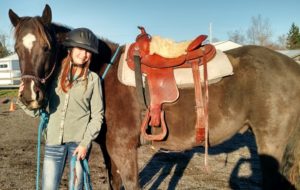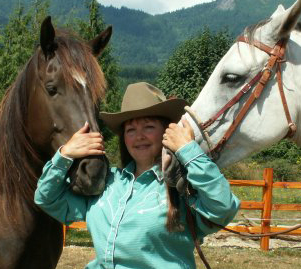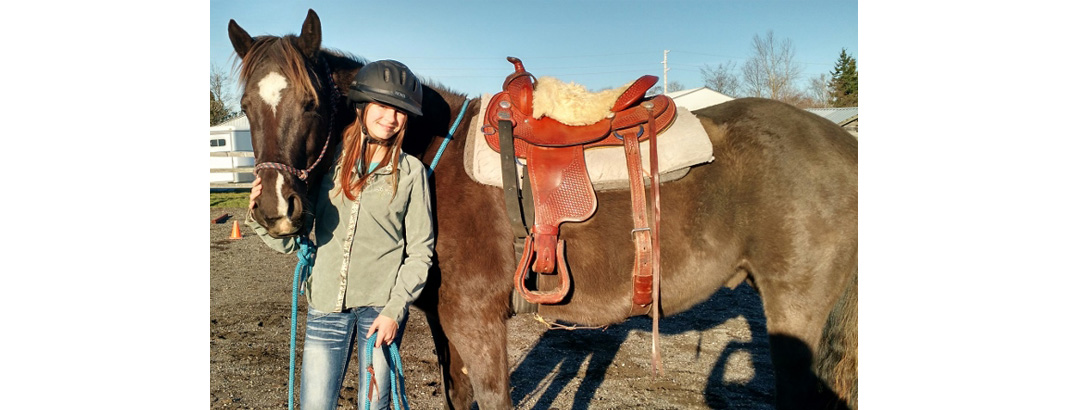Learn What Your Horse Really Needs
By Wendy Croney

Brrr, it’s cold! Why don’t our horses seem cold? Perhaps it’s because they are fuzzy, healthy, and cozy in their winter blankets. We humans brave the frosty days and cold, dark evenings caring for these fluffy, nickering beasts. They look to us for food and comfort this time of year so a good feeding program is important. We worry about whether they are warm and dry enough, drinking enough, and getting adequate exercise. We love them, and want to provide the best we can for our loyal friends.
How do we optimize their health? When it comes to proper nutrition, are we educated about their nutritional needs? There’s been vast progress in horse health research causing the knowledge-seeking student of horses to get weak in the knees. What is correct and to whom do we listen? Where does a person start? Hopefully I can help.
In my many years of horsekeeping, I have yet to land upon the perfect nutritional scheme for my own herd of five horses that trust me to keep them healthy. I’ve done a fair amount of research recently, and have found there are two methods of supplying the nutrition each horse needs in a feeding program. There are similarities in gathering the information needed to determine just what your horse requires.
Method 1: Test the forage you feed to determine what is lacking, then buy the needed supplements separately and add them to a non-fortified grain or hay pellet.
Horse nutrition experts have determined that forage should be the largest percentage of a horse’s feed. Most forage (hay or grass) will have much of what a horse needs nutritionally —more at certain times of the year and less at other times. For instance, when hay is freshly cut and baled, it’s richer in nutrients than it is six months later. Fresh grass will change nutritionally several times from early spring to late fall.
Most horse owners feeding program include some combination of pasture grass and hay for forage. Both will need to be tested throughout the year. Different vitamin and mineral supplements may be required during stages of forage age or growth.
Research to find what your horse needs for nutritional health. Some are insulin resistant, have metabolic disorders, PSSM or other issues. Feeding specific supplements can help. If you are fortunate enough to have a horse that has no special needs, this can be simple. Experts can pinpoint much of this information, but it’s good to ply your own due diligence as well.
If you aren’t sure if your horse has special needs, ask your veterinarian to examine and perform testing to determine if anything is amiss. Be prepared to answer questions about your horse. A standard exam would include normal temperature, resting heart rate, respiration count, and things like how many gallons of water is typical for him to drink, how many hours on pasture, how many pounds of hay, grain, what grain, supplements, and how much exercise. Being prepared with written information will help you get the most from your appointment and money spent with your vet.
When the forage test results come back to you and the vet has determined if there are any additional needs, you can then make a list of what to purchase.
Method 2: Buy a commercial feed that has the formula your horse needs.
Determine what supplementation your horse needs as in Method 1, then find a commercial feed company that makes a wide variety of feed formulas. Call and ask them to work with you to determine the correct formula, meeting the nutritional needs of your horse. They likely will have one that you can purchase at a local retailer. This simplifies the feeding routine amazingly! Although you may still need to purchase one or two separate supplements to totally meet all your horse’s needs, it can be so much easier, especially if your feeding program includes more than one horse!
This article might seem to have fewer money-saving tips than my past ones. I haven’t written the words “savings” or “cheaper.” However, I do know beyond a shadow of a doubt, —from personal experience and a lot of money spent—that doing the legwork is truly worth it. Don’t be fooled; this article is definitely about thrift, savings and being cheaper!

Wendy Croney has owned and ridden horses her entire life, discovering she has a true talent for effective, gentle horse training as well as teaching horseback riding. She has been training, teaching horsemanship and giving lessons in multiple disciplines for more than 30 years using her own methods developed through experience, as well as learning from Richard Shrake, Clinton Anderson and many others. Wendy is known for an economic approach to horse care and personally provides it to her own horses, including hoof trims. She focuses on creative ways to keep horses as naturally as possible on a tight budget. Wendy has retired from her business, “Galloping Horse Equestrian” in Colorado Springs, CO, however she is still available for consulting and continues the quest to provide the finest horse care for the most effective cost.






